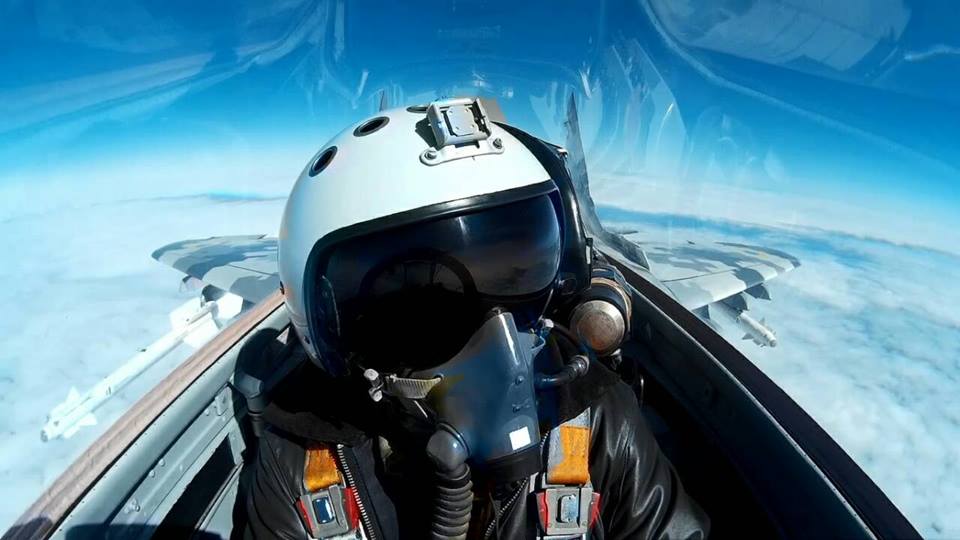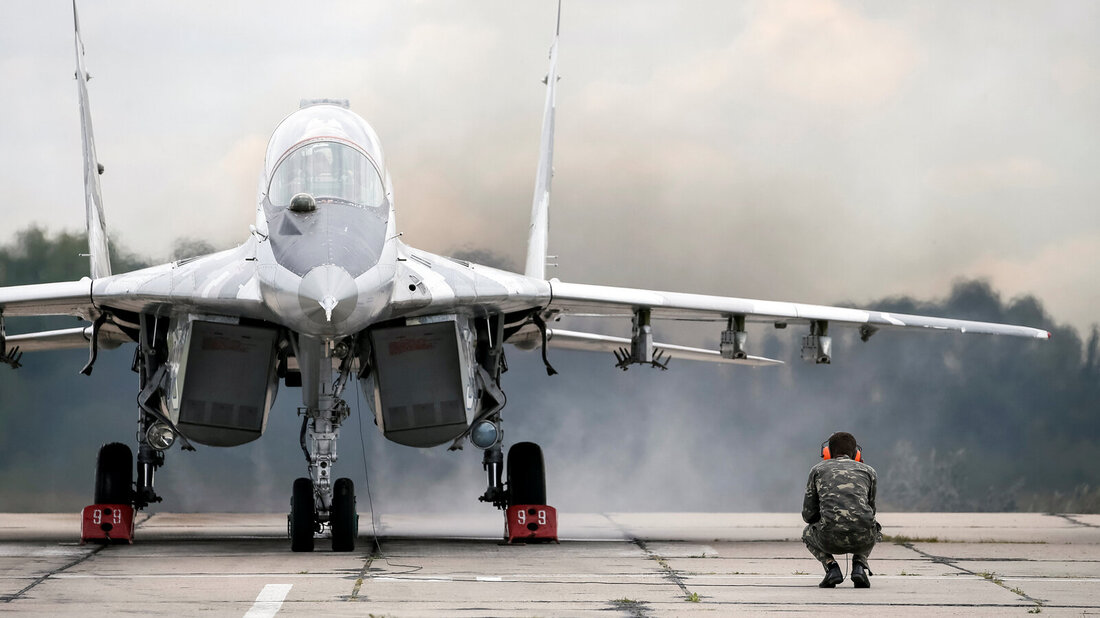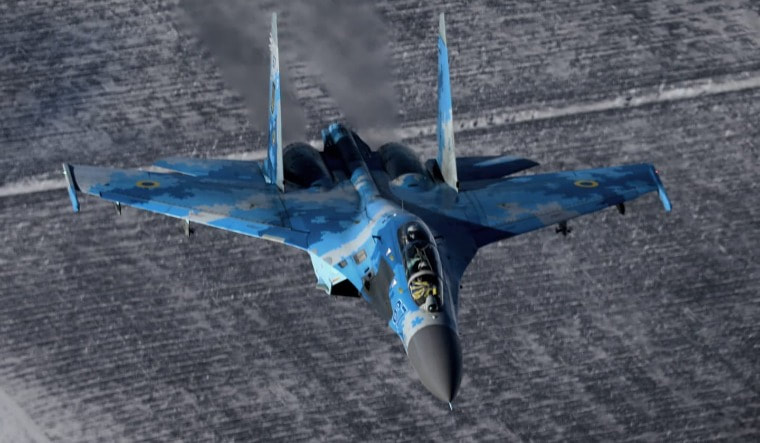|
A Ukrainian MiG-29 pilot who goes by the call sign ‘Juice’ has been giving interviews to media outlets about how Ukrainian aircraft and air defense systems have managed to keep the Russians in abeyance for over a month now. The Ukrainian Air Force has managed to do this with MiG-29 and Su-27 fighters. While the MiGs are used for air-to-ground and air defense missions, the Su-27s are primarily kept for air-to-air missions. The Su-27 is a more powerful air defense asset, however, the early loss of aircraft units has shrunk the size of the fleet, which was always smaller than the MiG-29 fleet. A typical air defense mission of a MIG-29 involves patrolling an area in search of an aerial threat, ‘free hunting’ or sometimes just pushing the enemy aircraft outside the area. “If they have us on their screen, especially if we have a few guys patrolling the area, they don’t want to get into trouble. So, we push them from this area,” Juice explained in his interview. Besides Russian manned aircraft, the MiGs are also tasked with neutralizing drones and cruise missiles which are hard to detect. However, Juice thinks ground-based air defenses (GBADs) are more effective against them. “I think ground air defenses are much more capable against them. They have a lot of kills of cruise missiles every day. Drones are also a great problem for us, but I think it’s a much bigger problem for them, our Bayraktars are much more capable than their UAVs,” says Juice. Multi-Layered Air Defense Network Manned fighters like MiGs work closely with GBAD units to form a multi-layered air defense network which involves sectors separated into different engagement zones for the fighters and GBADs to prevent friendly fire and also the manned fighters can try and push Russian aircraft into GBADs kill zones where “the more stupid ones” can then be picked off, Juice explained. This is the first time in decades the world is witnessing a large-scale conventional war which also includes the aerial domain and many young pilots like Juice have no combat experience. Older pilots who had taken part in combat during the height of the battle in 2014 in the eastern Donetsk and Luhansk regions ahead of the signing of the Minsk agreements have since shared their knowledge with new graduates joining the air force. The training since 2014 has stressed flexible tactics and keeping aircraft on the move from one airfield to another and flying difficult flight paths to reduce the chance of the enemy catching them on the ground as part of their air interdiction efforts. “They had pretty interesting experiences. Of course, we use that during our training: low-altitude flights, using alternative airfields, etc,” said Juice, of the old combat veterans. How ‘Clear Sky’ Drills Helped UkraineAlso, the Ukrainian pilots had some experience with large-scale high-intensity conflict scenarios from lessons learned from the US Air Force, particularly during the ‘Clear Sky’ series of drills in 2018 which was the first-ever joint multinational exercise hosted by Ukraine. During Clear Sky, the MiG-29s and Su-27s sparred with the F-15Cs of the California Air National Guard’s 144th Fighter Wing wherein the F-15s replicated the tactics and performance of Russian Su-30 and Su-35S Flanker fighters. The F-15s that took part in these maneuvers were older than the Ukrainian MiGs, they had been highly modernized and were considered much more capable than the Ukrainian MiG-29s and Su-27s that have undergone only modest and piecemeal upgrades. Even still, the Ukrainian pilots were “sometimes pretty successful, just using our flexibility and creation of non-standard decisions,” Juice recalled. “We did plenty of (basic fighter maneuvers) with our F-15Cs against their MiG-29s and Su-27s and to be honest we could tell instantly that their pilots were very good. They are very tactically inventive, they know their airframes and also understand what they are lacking. I mean, they fly old jets. Our F-15s for example are old airframes, but they have been constantly upgraded with new avionics,” retired Jonathan ‘Jersey’ Burd, the lead planner for the 2018 Clear Sky exercise told The War Zone. Above all, the Ukrainian pilots got a much better understanding of the NATO fighter pilot mindset through their sharing of methods to defeat Russian tactics which have made a huge difference as even after one month, Russian forces have not been able to dominate Ukraine’s airspace. The various tactics and techniques used by the Ukrainian Air Force in this war remain classified for obvious reasons but surely the war has reset the bar on a wide range of established air combat doctrine and dogma. “The Ukrainians are defining modern warfare,” Jersey told Coffee or Die. “Whatever ideas, assumptions, and tactics we believed were set in stone were done so by a nation that has not faced a peer threat for a very long time,” Jersey added. “Let me be clear, we trained the Ukrainian pilots as experts, but there is no substitute for aerial combat. They are the experts now.” Meanwhile, the Russian Air Force has so far used Su-30 and Su-35S aircraft for almost all of their air-to-air missions. Of these, Juice considers the Su-35s as the most dangerous because of its powerful radar and long-range R-77-1 air-to-air missiles with an active radar seeker that enables ‘fire and forget’ capability which is absent in the Ukrainian armory.
“It’s very capable, unfortunately for us,” said Juice of the R-77-1. “The lack of fire and forget missiles is the greatest problem for us. Even if we had them, our radars couldn’t provide the same distances [as the Russian fighters].” Also, the disparity between the number of Russian and Ukrainian aircraft is a big problem for Ukraine. “Sometimes they’re just trying to exhaust us,” Juice said, “flying near the border to get us to scramble, just to exhaust our manpower with these fuc***g stupid night flights.” With a huge advantage in sheer numbers, this tactic makes sense for Russia, as the Ukrainian jets can only be in one place at any time. Furthermore, the Russian side has an advantage in air-to-air missions as well “because sometimes it’s one versus 12 or two versus 12,” explained Juice. “They have the advantage of situational awareness, radar range, missile range, missile [guidance] principles, and electronic warfare, and they still are sending so many jets against one MiG.”
0 Comments
Leave a Reply. |
Send us an email at [email protected] if you want to support this site buying the original Division of Aero Patch, only available through this website!
All
|





 RSS Feed
RSS Feed